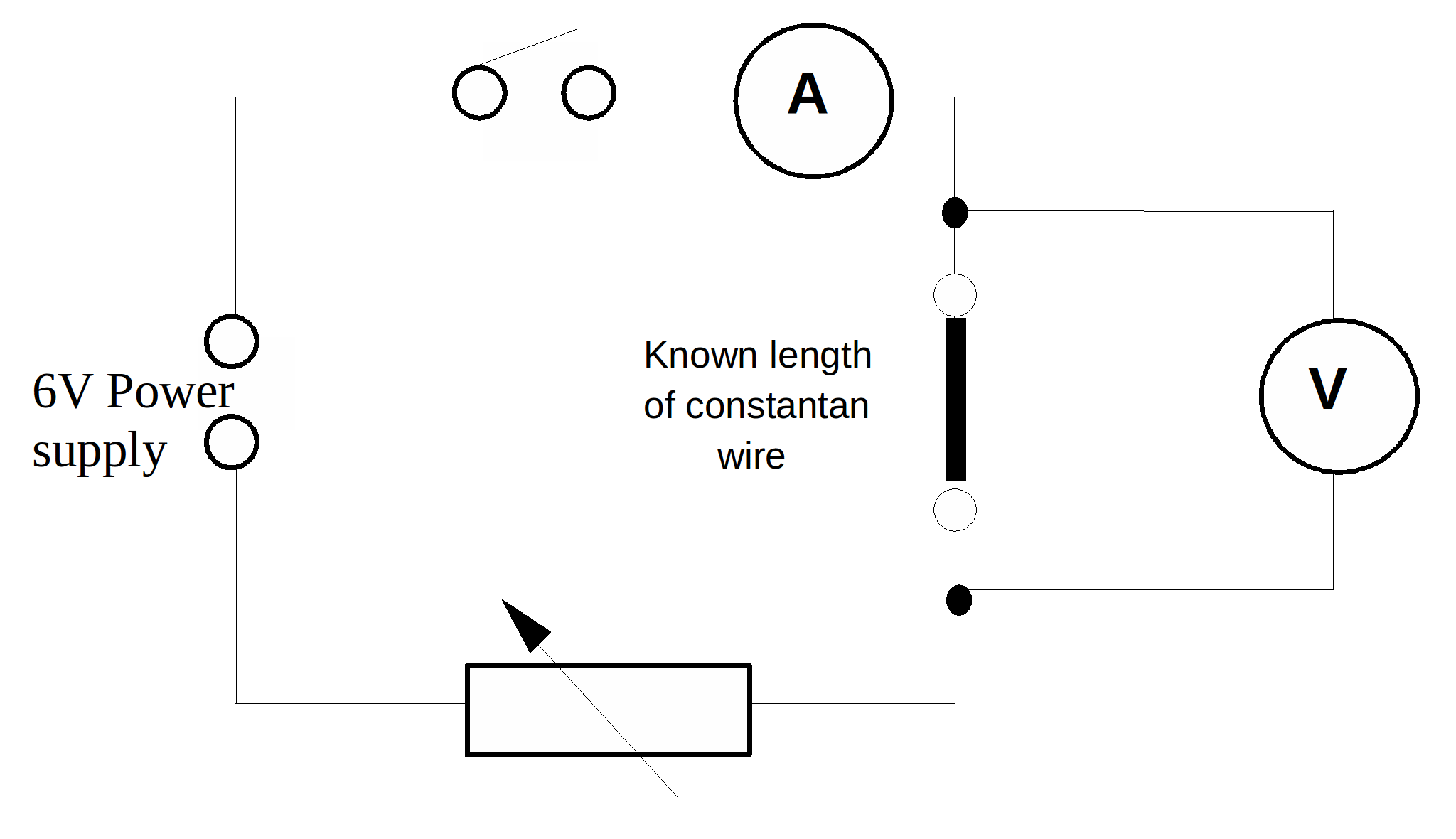Apparatus:
One metre length of constantan resistance wire, two crocodile clips, variable resistor, two digital multimeters, metre rule, micrometer, connecting wires, lab power supply, normally open switch.
Diagram:

Procedure:
1. Use the micrometer to measure the mean diameter (![]() ) of your wire. Do this by taking at least 10 readings at various positions along the length of the wire. (RECORD ALL YOUR READINGS)
) of your wire. Do this by taking at least 10 readings at various positions along the length of the wire. (RECORD ALL YOUR READINGS)
Use these readings to calculate the cross-sectional area,![]() of the wire in square metres.
of the wire in square metres.
(Note:![]() )
)
2. Set up the apparatus as shown in the above diagram using about 1.0m of the constantan wire between the crocodile clips and with the variable resistor set at its midpoint. Set the variable resistor at about its half-way point.
3. Record the length (L) of the constantan wire between the crocodile clips.
4. Close the switch and quickly measure the potential difference (![]() ) across the wire and the current (
) across the wire and the current (![]() ) through it and hence the resistance,
) through it and hence the resistance,![]() in ohms.
in ohms.
5. Repeat stages 3 & 4 for FIVE more different lengths of the constantan wire between 40cm and 100cm.
6. Draw a graph of resistance,![]() in ohms (
in ohms (![]() - axis) against length,
- axis) against length,![]() in metres (
in metres (![]() - axis) for your wire.
- axis) for your wire.
It should be a straight line. Measure the gradient,![]() of your line
of your line
7. Multiply your gradient by the area of the wire (in![]() ). The value you obtain is the resistivity of the wire in ohm-metre.
). The value you obtain is the resistivity of the wire in ohm-metre.
8. Answer the following questions:
(a) Which of all the measurements you have taken requires the greatest care ?
(b) Why is such care needed with this measurement?
(c) Why must the voltage and current readings be taken quickly ?
(d) Why does the gradient multiplied by the area equal the resistivity?
